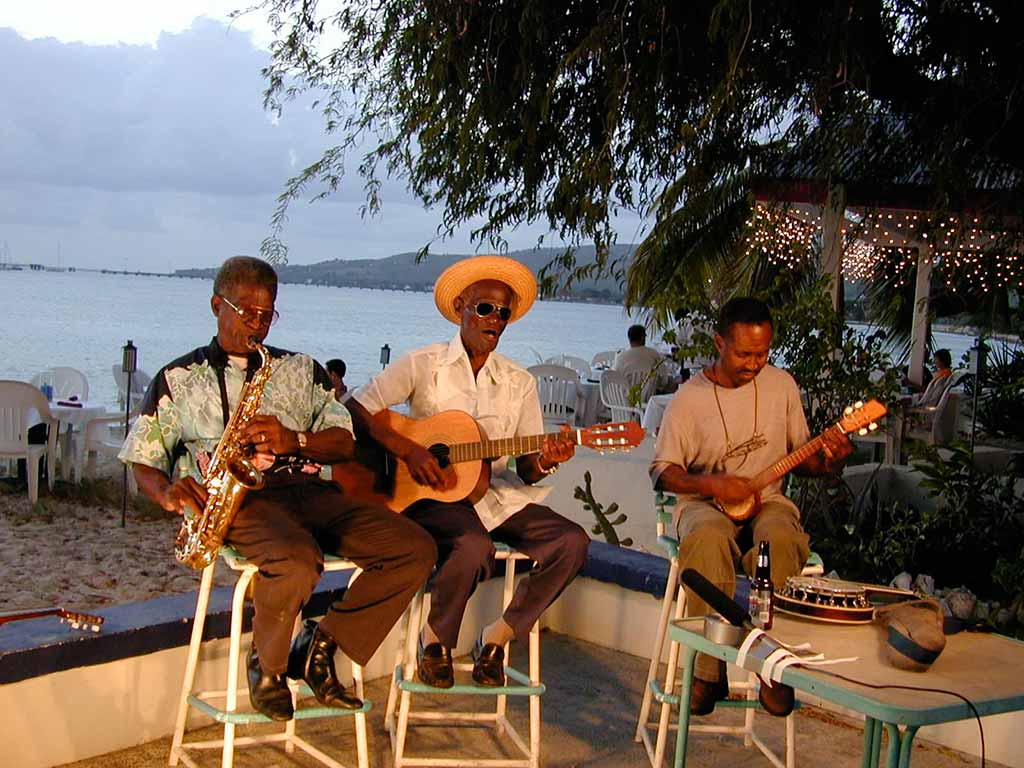Quelbe Music of the Virgin Islands
The traditional music of the Virgin Islands is quelbe, also called scratch or fungi. A quelbe band consists of a banjo, a conga drum, a squash, and a triangle. Other instruments sometimes included are guitar, bass, saxophone, and flute. Quelbe musicians use objects close at hand to construct their instruments, although today some have adopted more modern instruments. The banjo was often made out of an old sardine can. The squash was a dried local gourd, serrated and then scratched with a comb or wire-pronged stick. The bass line was usually provided by someone blowing into the discarded tailpipe of a car, also called an ass pipe because its sound is similar to that of a donkey.

Quelbe music developed on sugar plantations, where slaves used materials at hand to provide a rhythm and melody to which they could tell stories, share jokes, and spread gossip. The music was influenced by African rhythms and the sound of Danish and British military bands. Quelbe music grew in popularity as the restrictions of slavery ended and the music form could spread freely. Many older Virgin Islanders have sweet memories of nights spent dancing to the sound of the village quelbe band.
Quelbe music still tells stories and jokes, often with a risqué undertone. Quelbe is especially popular at Christmastime, providing a new and refreshing take on Christmas music. Traditionally, quelbe bands would go serenading in the wee hours of Christmas morning, wishing their neighbors a merry Christmas.
Today, quelbe music is being preserved by a handful of bands. In the British Virgin Islands, the Lashing Dogs and Loverboys perform fungi music (as it is called there) at bars and festivals. In the U.S. Virgin Islands, Jamesie and the Allstars, Stanley and the Ten Sleepless Nights, Bully and the Kafooners, and Blinky and the Roadmasters carry on the tradition. Jamesie Brewster, the leader of Jamesie and the Allstars until his passing in the summer of 2014, was the subject of a documentary. You can hear a snippet of his music at www.jamesieproject.com.

The British Virgin Islands host Fungi Fest, a two-day fungi music festival, in November.
The traditional accompaniment to quelbe music is the quadrille, a kind of square dancing introduced to the Virgin Islands from the French Caribbean and influenced by English and Irish planters. Quadrille or not, it is impossible to stand still listening to quelbe music. St. Croix culture bearer and writer Richard Schrader wrote in his book Maufe, Quelbe, and t’ing that when Jamesie Brewster performs, “trees shake their branches and grass bends down low.” That just about sums it up.
Newsletter Signup
By clicking ‘Sign Up,’ I acknowledge that I have read and agree to Hachette Book Group’s Privacy Policy and Terms of Use
Pin it for Later


